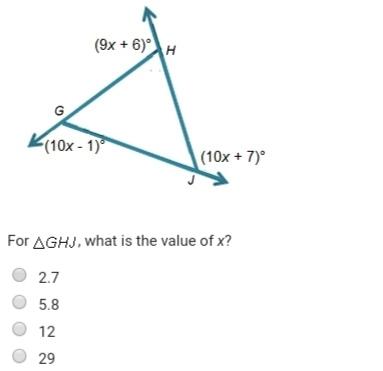
Mathematics, 10.03.2021 19:20 nathenq1839
Kyle and Dylan are trying to figure out the best approximation for V11. Both truncated the decimal expansion, which is 3.316, to
the nearest hundredth. Looking at their answers on the number line, which student, if either, truncated correctly? Justify
A)
B)
Kyle: To truncate the decimal expansion to the hundredths, drop the 6
without rounding. The correct answer is 3.31.
Dylan; To truncate the decimal expansion to the hundredths, round to the
nearest hundredth. The correct answer is 3.32
Neither: To truncate the decimal expansion to the hundredths, drop the 6
and change the 1 to a 0. The correct answer is 3.30
Neither: To truncate the decimal expansion to the hundredths, round to the
nearest tenth and affix a zero. The correct answer is 3.30
D)

Answers: 3


Another question on Mathematics

Mathematics, 21.06.2019 13:30
Find two rational expressions that have the difference of 2-n/n-4
Answers: 1

Mathematics, 21.06.2019 18:30
Suppose your school costs for this term were $4900 and financial aid covered 3/4 of that amount. how much did financial aid cover? and how much do you still have to pay?
Answers: 1

Mathematics, 21.06.2019 19:00
Eis the midpoint of line segment ac and bd also line segment ed is congruent to ec prove that line segment ae is congruent to line segment be
Answers: 3

Mathematics, 21.06.2019 21:40
Write the contrapositive of the conditional statement. determine whether the contrapositive is true or false. if it is false, find a counterexample. a converse statement is formed by exchanging the hypothesis and conclusion of the conditional. a) a non-converse statement is not formed by exchanging the hypothesis and conclusion of the conditional. true b) a statement not formed by exchanging the hypothesis and conclusion of the conditional is a converse statement. false; an inverse statement is not formed by exchanging the hypothesis and conclusion of the conditional. c) a non-converse statement is formed by exchanging the hypothesis and conclusion of the conditional. false; an inverse statement is formed by negating both the hypothesis and conclusion of the conditional. d) a statement not formed by exchanging the hypothesis and conclusion of the conditional is not a converse statement. true
Answers: 1
You know the right answer?
Kyle and Dylan are trying to figure out the best approximation for V11. Both truncated the decimal e...
Questions

Mathematics, 31.03.2020 21:19

Health, 31.03.2020 21:19




English, 31.03.2020 21:19


Biology, 31.03.2020 21:19

Advanced Placement (AP), 31.03.2020 21:19


Mathematics, 31.03.2020 21:19

Mathematics, 31.03.2020 21:19


Mathematics, 31.03.2020 21:19

Mathematics, 31.03.2020 21:19


Geography, 31.03.2020 21:19

Mathematics, 31.03.2020 21:19

Mathematics, 31.03.2020 21:19




